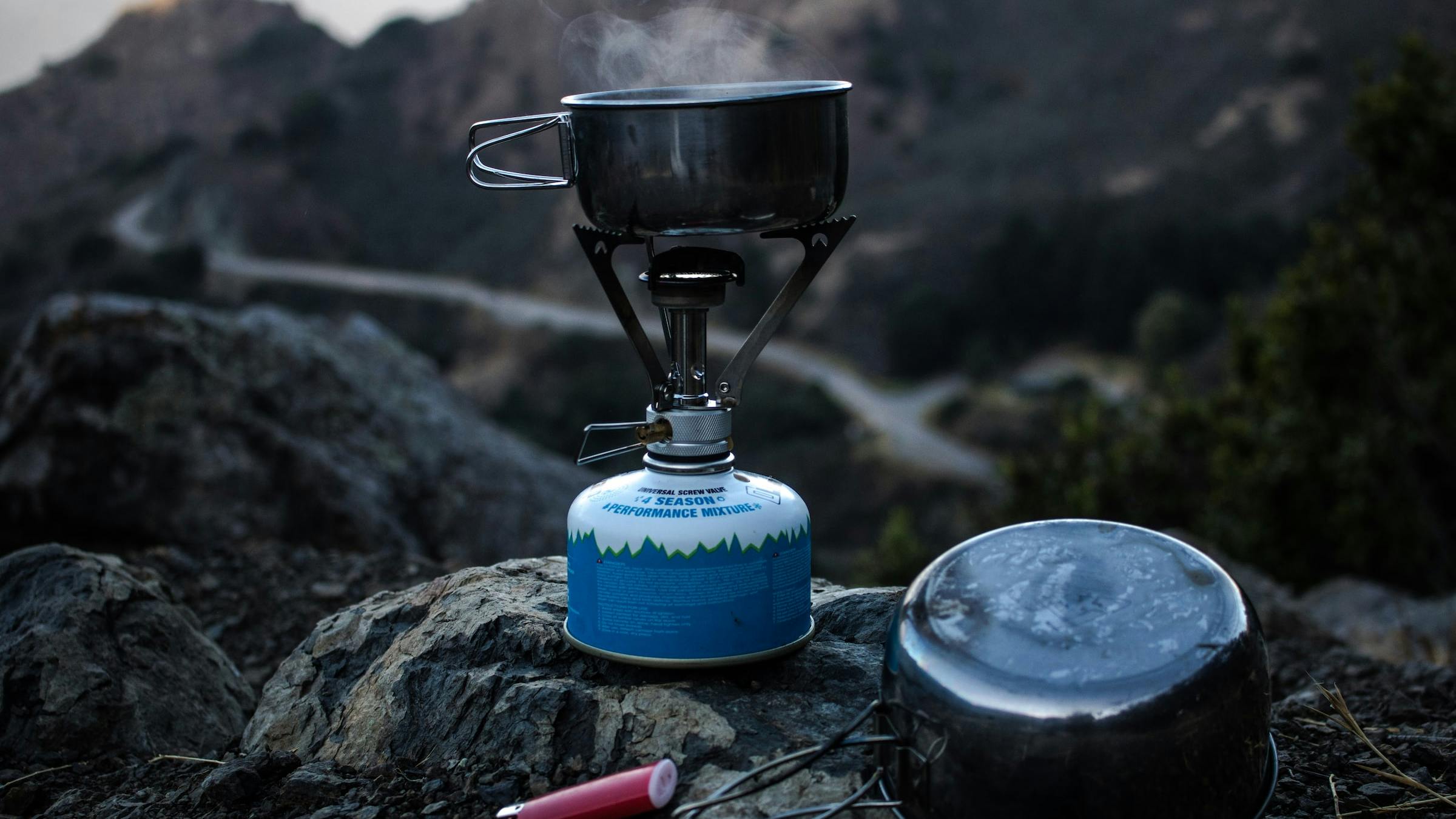What is a pressure regulated stove, and do you need one?
It can be hard to figure out if you need a pressure regulated canister stove, or if a cheaper unregulated stove will do the trick. Here we break it all down for you.
Written by Hiker's Buddy Staff. Last updated on November 13th, 2022.
If you’re in the market for a backpacking stove you’ve probably heard the terms ‘regulator’ or ‘pressure regulated’ thrown around. You might be tempted to dismiss this as marketing speak or technical jargon. Don’t. While the regulator is small, it’s very important to the performance (or lack thereof) of your stove, and has the potential to make or break your backpacking adventure.
Let’s get into the details:
How gas canisters work
Standard butane, isobutane and propane gas canisters rely on something known as “vapour pressure” to ensure a steady supply of fuel is fed through to your stove.
Under “normal” temperatures and pressures, the fuel in your canister (butane, isobutane, propane, or some combination of these) has a natural tendency to vaporise into a gas.
This vaporisation increases the internal pressure within the canister until it reaches an equilibrium, at which point the internal pressure keeps the remaining fuel in a liquid state.
When you attach your stove to the canister and open the valve, the internal pressure inside the canister is higher than the external pressure, so the vaporised gas is forced out through the stove, where you burn it to make your cup of coffee.
As this vaporised gas escapes, more of the liquid fuel vaporises, which maintains an approximately constant pressure in the canister and ensures a steady flow of gas.
Gas canisters in cold weather
However, problems start to arise when the temperature of your gas canister drops, as this causes the pressure inside to drop too.
Unregulated canister stoves are designed to operate optimally with a specific canister pressure - often somewhere around 45 psi. Depending on the gas mixture, this pressure will occur with a canister temperature of about 20°C.
If the temperature drops to 0°C , then the internal pressure will drop to somewhere around 22.5 psi. This means when you fire up your unregulated stove in freezing conditions, you could be looking at a drop in power output of 50%. Yikes.
What’s more, just the process of running the stove reduces the canister temperature further; so the longer you run the stove, the weaker the power output will become.
How regulated stoves solve this problem
Pressure regulated stoves solve this problem, at least up to a point.
A pressure regulated stove will be designed to perform optimally with a substantially lower gas pressure than an unregulated stove, perhaps in the range of 15 - 20 psi.
Inside the stove a small device known as the regulator modulates the pressure to ensure that the stove consistently receives this specific pressure, regardless of the higher internal pressure within the canister.
The result is much more consistent stove performance, and the ability to maintain this level of performance down to lower temperatures.
A related benefit is that a regulated stove will also generally offer more fine-grained control over the power output of the stove, which can be very when what you’re cooking requires a gentler heat.
Before you head out in the snow
Know that while pressure regulated canister stoves will manage cold temperatures better than their unregulated peers, they will still suffer substantial performance degradation or fail completely in extreme cold.
The temperature when this performance drop begins will depend on the design of your stove, and the fuel you’re using. Pure isobutane boils at -12°C; at temperatures any lower than this it won’t vaporise, and your stove won’t light. However, keep in mind that the performance will begin to suffer at temperatures well above this absolute lower limit.
To help combat this, many canisters use a mixture of isobutane and propane, which boils at lower temperatures, and thus can maintain canister pressures down to lower temperatures too. While this fuel mix helps to buy a few extra degrees of cold weather performance, eventually you’ll still run into the same problem.
Because of this limitation, if you’re likely to be using your stove in extreme cold, particularly in temperatures of -5°C to -10°C or below, then even a regulated canister stoves may not offer the reliability and consistent performance that you need. In such conditions, you’ll probably be better off looking into an alternative that runs on liquid fuel.
On the other hand, if you know you’re never going to be heading out in extreme cold, then a pressure regulated canister stove, or even an unregulated canister stove may be perfect for you.
